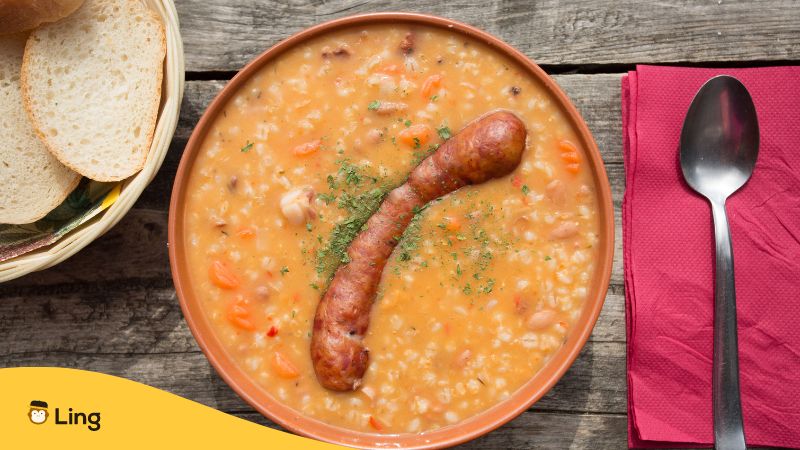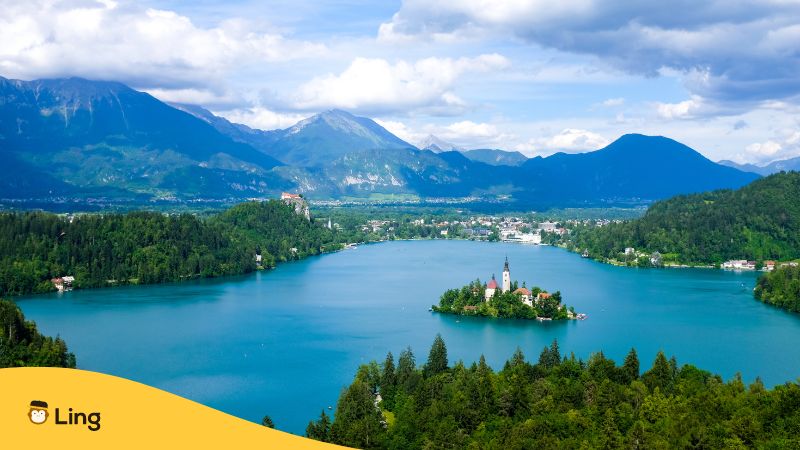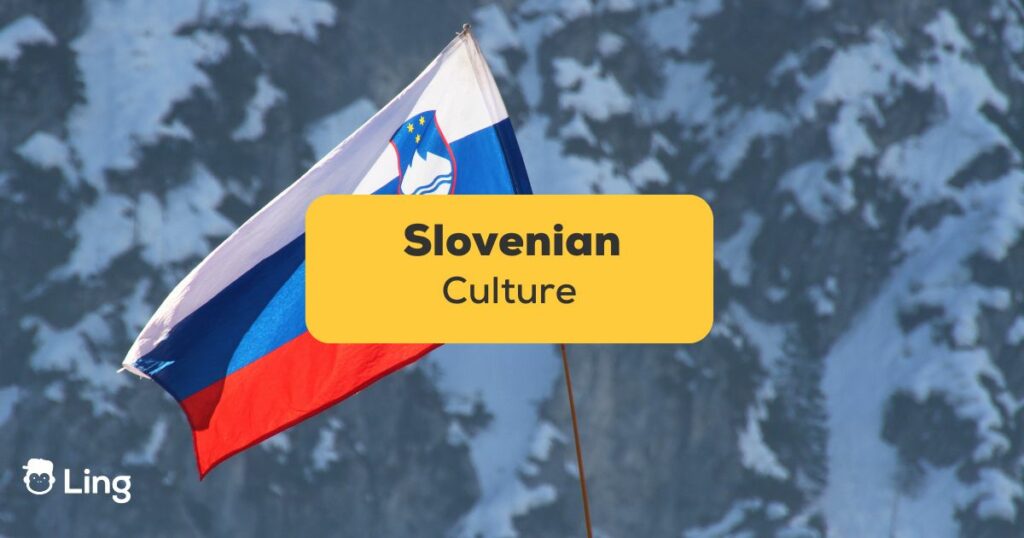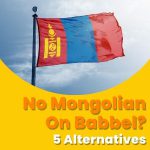Slovenia is small, but it may surprise you with its many interesting cultural aspects. From traditions and cuisine to architecture and art, this place simply can’t leave you indifferent.
In this post, we’ll discover everything there is to know about Slovenian culture. To bring you even closer to the country, I’ll also teach you some related easy vocabulary along the way. Let’s begin!
Table Of Contents
Explore Slovenian Culture
Slovenia is a South Slavic country in central Europe, next to Italy, Austria, Hungary, and Croatia. Over the years, Slovenia has developed its own incredibly diverse culture, but also has ways of life influenced by its neighbors and history.
Slovenian culture is shaped by other things as well, such as Slovenian geography. For example, you’ve got the Julian Alps and the Adriatic Sea, both depicted on the flag, as Slovenians take great pride in the country’s stunning nature. Let’s go through each aspect that makes Slovenian culture unique and interesting!
Brief History Of Slovenia
Let’s start with a brief history of Slovenia. While it’s quite long and deserves its own post, here are the key events that will help you understand the development of Slovene culture.
Slovenia’s history begins in the 6th century with Slavic tribes forming the Duchy of Carantania. Even under the Frankish Empire in the 8th century, they managed to keep their cultural identity. The 10th-century Freising Manuscripts, the oldest documents in Slovenian, mark the early development of the Slovenian language despite German influences.
During the Middle Ages, Slovenia was ruled by various feudal lords with notable German influence. By the 15th century, the Counts of Celje emerged as prominent nobles. During this time, there were Turkish raids, peasant revolts, and big cultural achievements, like the first ever Slovenian book in 1550!
The 19th century saw a cultural revival and industrialization in Slovenia, though many moved away due to limited opportunities. The 1848 uprisings made people dream of a United Slovenia, seeking its own cultural and ruling voice.
World War I hit hard, leading to the birth of Yugoslavia in 1918. The years between wars saw some good times, but World War II split Slovenia between Nazi Germany and Fascist Italy, sparking a big fightback and paving the way for a socialist Yugoslavia.
Under socialism, Slovenia had a good economy. In the 1980s, more and more people started to oppose the government. This led to Slovenia breaking away in 1991 after a short conflict. Slovenia became part of the European Union and NATO in 2004, and joined the Euro currency in 2007.
Today’s cities, Ptuj, Celje, and Ljubljana were already settled by the Romans. The names today are somewhat similar still, for example, Celje was called Celeia.

Slovenian Language And Literature
The official language of Slovenia is the Slovenian language. It’s a language that is spoken by over 2 million people all over the world.
Though not as widely learned as some languages, many still take an interest in Slovenian. Some are drawn to it because of the culture, history, or they want to read books in the native language. People with family from Slovenia may wish to link back to their heritage, and there are also those who learn it for work or school. Whatever the reason may be, there are many ways to pick up Slovenian, with the Ling app being one of the top choices.
As already mentioned in the history lesson, Slovenian literature has a long history, starting with religious texts in the Middle Ages. It really took off during the 16th-century Reformation after the Bible was translated into Slovenian. But it wasn’t until the 19th century that it flourished with writers like France Prešeren, who’s still celebrated as a national hero to this day!
During this time, Slovenian literature played a big part in shaping national identity. Writers like Ivan Cankar and Ivan Tavčar were key figures. In the 20th century, Slovenian literature continued to evolve, exploring different themes and styles.
Today, Slovenian literature is still vibrant, with modern writers gaining international recognition through translations of their work.
Slovenian Habits And Traditions
Slovenians have some interesting and sometimes odd traditions that can seem interesting to foreigners.
Each year, at the end of winter, you can see Kurentovanje parades all over Slovenian towns. These are vibrant Shrovetide festivals, with iconic Kurenti figures and other costumes parading the streets. It starts on Shrove Saturday and ends on Shrove Tuesday. The best parade can be found in the town of Ptuj. It’s a tradition recognized by UNESCO.
In the past, people in Slovenia used to dress formally, especially for special occasions like Sundays. The style of clothing was different across regions. But these days, national costumes are mainly worn by folk dancers and musicians, with around 500 folklore groups in Slovenia. There are cultural festivals where you can see these costumes and different performances.
Did you know that Slovenia is known for beekeeping? The Carniolan honeybee, native to Slovenia, is famous worldwide and found in many places. It’s known for its gentle nature, hard work, and humility. You could say it shares these traits with the Slovenian people. There are over 11,000 beekeepers in Slovenia and 200,000 bee colonies.

Slovenian Art And Music
There’s a certain type of Slovenian folk music that you will only hear in this part of the world. Imagine walking through a Slovenian village party where people gather and listen to live music that includes instruments like the typical Styrian harmonica, fiddle, clarinet, zithers, and flute.
Different types of dances accompany this kind of Slovenian music, such as the polka dance.
Slovenia has a great modern music scene with famous musicians who are popular at home and abroad. One of them is Laibach, an avant-garde music group known for their unique blend of industrial, martial, and electronic music; they’ve gained a cult following worldwide.
Slovenia has had some incredible artists over the years, with works of art that are still a sight to behold.
Rihard Jakopič was a key figure in Slovenian Impressionism. His paintings captured rural life and landscapes, promoting Slovenian national identity. In his works, you’ll see depictions of Slovenia’s countryside and the cultural and social hopes of its people.
Another great Slovenian artist is Ivana Kobilca. Her impact on Slovenian art cannot be overstated. She was a master of light, color, and composition, and her work still inspires other artists to this day. She’s a key figure in Slovenian cultural identity.
Slovenian Food And Drinks
Slovenia is a foodie paradise, and Slovenian food truly reflects the country’s diverse cultural influences through some regional specialties.
The most famous dish is the Kranjska klobasa, also known as Carniolan sausage. It’s a Slovenian sausage made from pork, typically seasoned with garlic, salt, pepper, and sometimes a hint of nutmeg.
Among Slovenian desserts, Prekmurska gibanica is the one that stands out. It’s a layered pastry dessert originating from the Prekmurje region. It’s made of flaky pastry with many fillings, such as poppy seeds, cottage cheese, walnuts, apples, and sometimes raisins.
Slovenia is especially known for its incredible methods of producing excellent wine. You see, with diverse soil and varied climates, the three wine-growing regions in Slovenia are the winemaker’s paradise. Did you know that the oldest vine in the world can be found in Maribor, Slovenia?

Slovenian Architecture And Landmarks
While walking through the streets of Ljubljana, you can notice some very important architectural monuments and landmarks, a lot of them works of the greatest Slovenian architect Jože Plečnik.
He designed iconic landmarks, like the Triple Bridge and the Central Market in Ljubljana. His work reflected Slovenian culture by blending historical elements with innovation.
There are some other fascinating places in Slovenia that show off the country’s rich culture and history.
Think of the small island sitting in the middle of a serene lake with a charming church standing on it. That’s Bled Island for you! It’s a picturesque spot in Lake Bled, also the most visited spot by tourists.
If you ever find yourself in Ljubljana, you can’t miss the nebotičnik, which means skyscraper. It’s a historic building that was one of the tallest in Europe when it was built. From the top, you’ll also get great views of the city!
The Slovenian Philharmonic is a prestigious institution that has been making beautiful music since the early 19th century. Also found in Ljubljana, it’s not just a venue for concerts, but a hub for nurturing Slovenia’s musical talents!
If you take a step into the coastal town of Piran, you’ll find yourself in the heart of the historic center at Piran square. Here, you get to see the country’s rich history and Mediterranean influence, national heritage, and identity.
Slovenian Identity, Symbols, And Modern Culture
Slovenian identity is deeply rooted in its national symbols, such as the Triglav mountain, the Lipizzaner horse, the Carniolan bee, and the Human fish.
Ljubljana, the capital city, is also known as the city of dragons. The Ljubljana dragon is a powerful symbol representing strength and courage. The dragon is a big part of Ljubljana’s history, seen on important landmarks like the Dragon Bridge.
Slovenian culture today is kind of like a mix of old traditions with modern influences. Even with changes from globalization, Slovenians are very proud of their heritage, shown in their lively arts, tasty food, and close community ties.
Slovenians abroad also try to keep connections with home and add to global diversity. These are all aspects that highlight Slovenian culture.

How Do You Say Culture In Slovenian?
The Slovenian word for culture is kultura.
Useful Slovenian Vocabulary Related To Culture
It goes without saying that you should learn about the culture while learning a language. It’s a way to get a better idea of the customs, traditions, and values of that country. That’s why I’ve also prepared a short vocabulary list of Slovenian words related to culture.
| English | Slovenian |
|---|---|
| Language | Jezik |
| Music | Glasba |
| Art | Umetnost |
| Book | Knjiga |
| Dance | Ples |
| Theater | Gledališče |
| Movie | Film |
| Painting | Slikarstvo |
| Literature | Literatura |
| Architecture | Arhitektura |
| Tradition | Običaj |
| History | Zgodovina |
| Festival | Festival |
| Exhibition | Razstava |
| Song | Pesem |
| Folk customs | Narodni običaji |
| Folk music | Ljudska glasba |
Frequently Asked Questions About Slovenian Culture
What Makes Slovenia Unique?
Slovenia is special and unique for many reasons. Firstly, the Slovenian language is known for a grammatical feature called the dual form. It’s a grammatical number that Slovenian uses in addition to singular and plural.
What makes it unique is also its size, as it’s quite smaller than other European countries. This gives it a special charm, and it’s super easy to explore Slovenian towns and cities on foot.
Slovenia also has very diverse natural beauty, with gorgeous mountains, caves, lakes, rivers, and coast that are all tucked inside this small land, but make it a great choice for outdoor activities.
What Are Slovenian People Known For?
Slovenian people are especially known for their great achievements in the world of sports! Slovenia has produced many successful athletes in various sports, especially skiing, basketball, and mountain climbing.
Slovenian people are considered to be hard-working, modest, and extremely friendly, especially to tourists and visitors.
What Kind Of Language Is Slovenian?
Slovenian is a South Slavic language, part of the Indo-European family. It’s similar to Croatian, Serbian, and Bosnian. It’s the main language in Slovenia and has its own grammar, words, and sounds that make it different from other Slavic languages.
Throughout history, Slovenian has been influenced by nearby languages like German, Italian, and Hungarian. Some words from these languages are used in local dialects!

Discover Slovenian Culture
Even though we touched upon a lot of important things in this post, there’s always still more that you can learn about Slovenian culture. Because as you can see, despite its small size, Slovenia is incredibly diverse and offers more than meets the eye. A perfect destination for explorers and those who want to immerse themselves in rich cultural experiences.
So, next time you’re planning your travels, think about adding Slovenia to your list and dig deep into the fascinating Slovenian culture.



































































